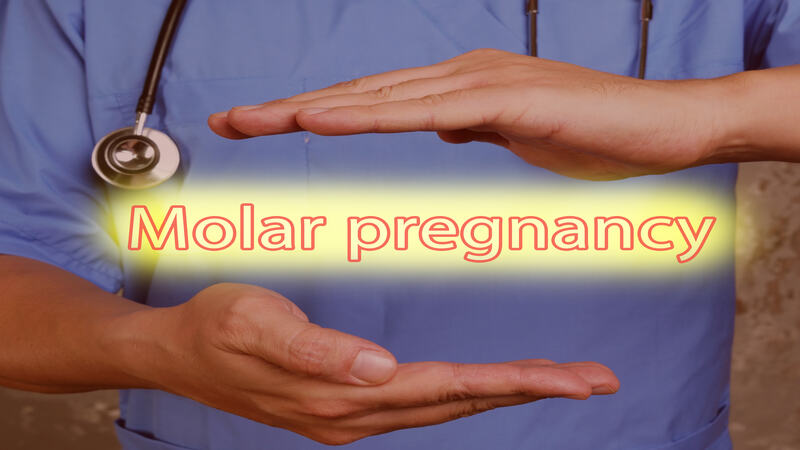
Molar pregnancy is also known as hydatiform mole. It happens when there is an abnormality in fertilization of egg by the sperm which in turn leads in growth of water filled sacs in the uterus. About 1 in 1000 pregnancy is molar pregnancy in USA but in Asia it is around 1 in 100 pregnancies (1).
In this article we will discuss in details about molar pregnancy , its causes, risk factor, diagnosis and treatment.
What is Molar Pregnancy?
A molar pregnancy is an abnormal type of pregnancy. It happens because of the abnormalities in the growth of trophoblasts. These cells ultimately develop into the placenta. You will find two types of molar pregnancies. In the partial molar pregnancy, the development of a fetus will happen along with the unusual placental tissues. But, the fetus will not survive long in such a case. For the case of complete molar pregnancy, only abnormal placenta tissues form (2).
Is a Molar Pregnancy a Real Baby?
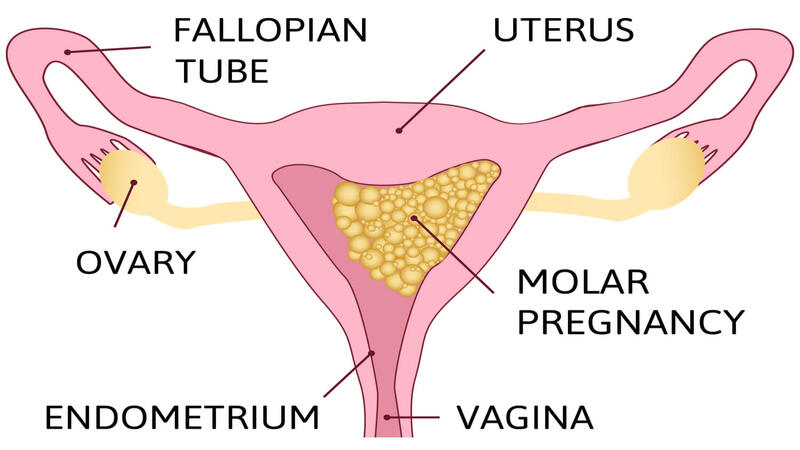
If someone has a complete molar pregnancy, then she will not have the baby. The sperm will fertilize an empty egg. In such pregnancies, the woman will only have placenta parts that are swollen tissues looking like cysts. The placenta grows with time. So, the body produces pregnancy hormones. However, when you go for an ultrasound test, you will find there is no baby. In a partial molar pregnancy, the fetus will form. But, it will not survive for long (3).
Is a Molar Pregnancy Dangerous?
Molar pregnancy is a type of disease. If you don’t act quickly and treat this disease, then it can become dangerous. It is a gestational trophoblastic disease. Because of this type of condition, a tumor can grow in the uterus. So, because of this disease, a woman can have cancer too. So, if you find that you have this medical condition, you should act quickly and treat it. Otherwise, this disease can become very harmful to you (4).
What Causes H Mole Pregnancy?

The main cause of H Mole is the abnormal fertilization of the empty egg. There are 23 pairs of chromosomes in human cells. In a pair of the chromosome, a part is from the mother, and the other is from the father. In the case of this type of pregnancy, after the fertilization of the empty egg, the entire genetic material from the father gets activated. But the mother’s genetic material stays inactive. This leads to the duplication of the father’s genetic material. In this way, this pregnancy issue can happen (5).
[Read: Ectopic Pregnancy – A Comprehensive View]
How Long Can a Molar Pregnancy Go Undetected?
It is important to detect hydatidiform mole as soon as possible. Otherwise, it becomes difficult to treat. As you already know, molar pregnancy can become very dangerous. So, you have to take evasive actions. Pregnant women will discover molar pregnancy during the ultrasound test during 8 to 10 weeks of their pregnancy. Also, after a miscarriage, while having a test, this medical condition may become evident. Moreover, abnormal vaginal discharge during pregnancy will indicate the possible case of molar pregnancy.(6)
Is There a Heartbeat With This Pregnancy Issue?
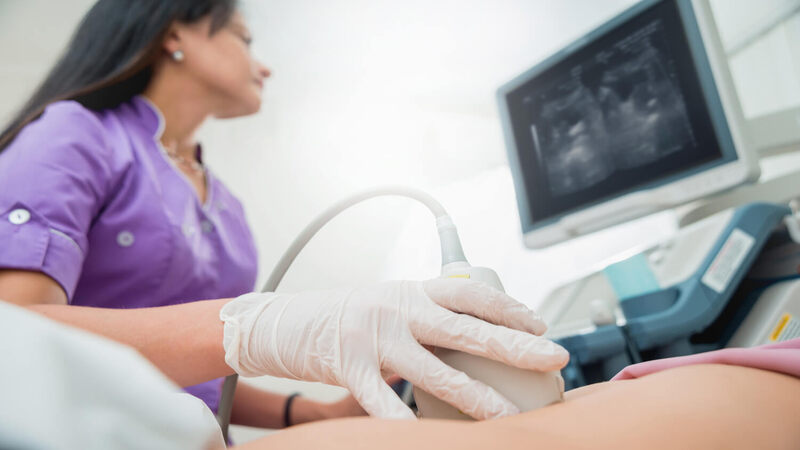
Many people wonder whether any heartbeat is there with molar pregnancy. But, the reality is, there will be no heartbeat with this pregnancy issue. The doctor discovers this issue when they don’t find a heartbeat even after the 12 weeks of pregnancy. It can also be a sign of miscarriage. Doctors use ultrasound tests to determine this pregnancy issue. The test will show a strange-looking placenta resembling the size of a bunch of grapes. So, if there is no heartbeat found even after the 12th week of your pregnancy, then it can be a case of hydatidiform mole (7).
[Read: First Ultrasound During Pregnancy]
Is Triploidy Always a Molar Pregnancy?
It is not right to say that the case of triploidy will always lead to molar pregnancy. However, there is some doubt about two sperms fertilizing a single empty egg. In such a scenario, the chances of this pregnancy issue will increase quite a lot when triploidy happens with the involvement of a sperm or an egg having 46 chromosomes, the chances of this pregnancy issue decreases quite a bit. However, the proof is not yet there that triploidy will always cause this type of pregnancy (8).
How High Are hCG Levels in This Type of Pregnancy?
In this type of pregnancy, there will be no baby because of the empty egg. So, what happens is the placenta continues to grow. Because of that, the HCG level rises quite rapidly. Hence, a woman will feel that she is pregnant. The HCG level can rise close to 100,000 mIU/mL. It will also show the chances of a molar pregnancy. But, even with normal HCG levels, This pregnancy issue can happen (9).
How do You Terminate This Kind of Pregnancy?
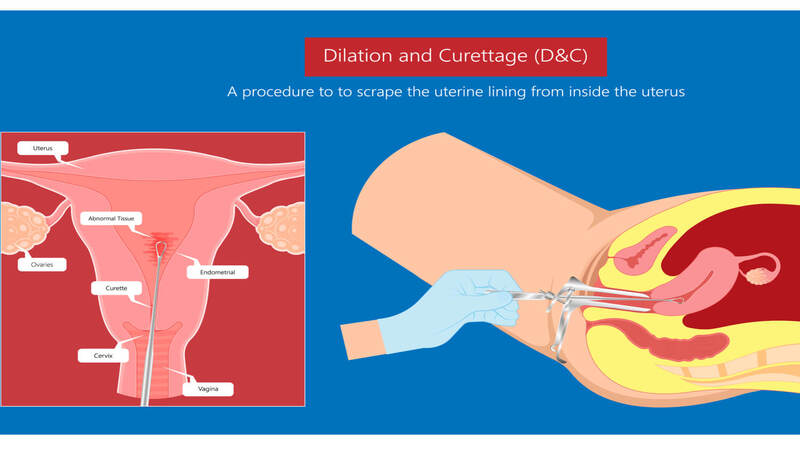
A woman with this pregnancy issue should look for treatment immediately. If one delays the treatment, then many unwanted complications can occur. Here are some treatments for a molar pregnancy:
1. Dilation and Curettage (D&C)
D&C is a small surgical procedure. This procedure is used to remove tissues from the uterus by dilating the cervix. The doctor will eliminate the placental tissues from the uterus by the dilation and curettage process. After a D and C, women can restart most of their normal activities in 1 or 2 days. (10)
2. Hysterectomy
A hysterectomy is a surgical process to remove a woman’s uterus. If the woman with this issue has no wish to get pregnant in the future, then the doctor will remove the uterus.
3. HCG Monitoring
Once the doctor removes the placental tissues, he or she will monitor the HCG level thoroughly until it becomes normal again.
Who is at the Risk of Molar Pregnancy?
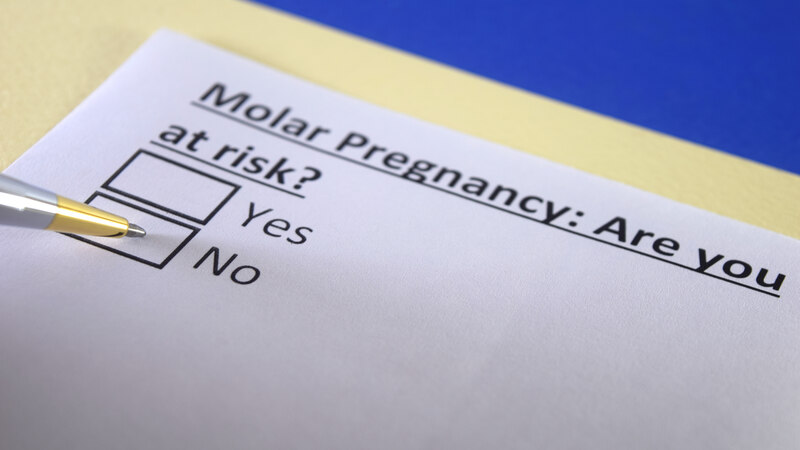
The odds of complete molar pregnancy increase in women over age 35. The risks become even higher in women above 45 years. The chances of contracting this issue is relatively high in women under 20 years. The risk of contracting this type of pregnancy is relatively low in 20 to 25-year-olds. The chance further increases with age until menopause. Finally, if a pregnant woman faces this issue, then she should treat it promptly. Otherwise, it can be very dangerous for the health of the woman. So, consult with the doctor before you take any step to cure this pregnancy issue (11).
It is very disheartening for the couple to get the news of a molar pregnancy. There are all the risk factors, complications, treatment options are discussed in this article. But as soon as the woman becomes pregnant she should undergo proper tests to rule out out molar pregnancy. Even after the diagnosis of molar pregnancy proper treatment and follow-up should be done under health care professionals so that there is no recurrence of the same.
FAQ’s
1. Can You Have A Healthy Baby With A Molar Pregnancy?
Molar pregnancy can never develop into a normal pregnancy. Due to abnormal fertilisation of the egg there is formation of molar pregnancy where there are no fetal parts developed.
2. What Is The Difference Between A Molar Pregnancy And A Normal Pregnancy?
In complete molar pregnancy, the fetal body parts are missing. It is only tissue can looks like grapes which can be seen in scans and after section and evacuation. But in normal pregnancy, the proper fetal body parts are visible in scan.
3. What Is The Mechanism Of Molar Pregnancy?
In molar pregnancy, there is one set of maternal chromosome but there is duplication or 2 sets of paternal chromosomes which causes abnormality in pregnancy. It is thought to occur due to two sperms fertilising one egg which causes one extra copy of paternal genes.
4. How Did You Know You Had A Molar Pregnancy?
For confirming pregnancy, the women need to do a urine pregnancy test by kit and confirm the pregnancy. In molar pregnancy the beta hcg levels are abnormally high, so by doing the serum beta hcg we can detect molar pregnancy. Confirmation of molar pregnancy is done by ultrasound which shows snow strom appearance in the uterus.
Read Also: Is Pregnancy Possible After A Hysterectomy?
References
- Ross S. Berkowitz, M.D., and Donald P. Goldstein, M.D -Oncology, Department of Obstetrics and Gynecology, Brigham and Women’s Hospital; the Dana–Farber Cancer Institute; and Harvard Medical School — all in Boston – https://www.nejm.org/doi/abs/10.1056/nejmcp0900696#
- Valena Soto-Wright, Marilyn Bernstein, Donald Peter Goldstein, Ross S. Berkowitz, The changing clinical presentation of complete molar pregnancy, Obstetrics & Gynecology, Volume 86, Issue 5, 1995, Pages 775-779 – https://www.sciencedirect.com/science/article/abs/pii/002978449500268V#
- Ross S. Berkowitz, Daniel W. Cramer, Marilyn R. Bernstein, Sally Cassells, Shirley G. Driscoll, Donald P. Goldstein, Risk factors for complete molar pregnancy from a case-control study, American Journal of Obstetrics and Gynecology, Volume 152, Issue 8, 1985, Pages 1016-1020 – https://www.sciencedirect.com/science/article/abs/pii/0002937885905502#
- BERKOWITZ, ROSS S. MD; GOLDSTEIN, DONALD PETER MD; BERNSTEIN, MARILYN R. BFA. Natural History of Partial Molar Pregnancy. Obstetrics & Gynecology 66(5):p 677-681 – https://journals.lww.com/greenjournal/abstract/1985/11000/natural_history_of_partial_molar_pregnancy.16.aspx#
- Darling, A.J., Albright, B.B., Strickland, K.C. et al. Molar Pregnancy: Epidemiology, Diagnosis, Management, Surveillance. Curr Obstet Gynecol – https://link.springer.com/article/10.1007/s13669-022-00327-6#
- Ross S. Berkowitz, Daniel W. Cramer, Marilyn R. Bernstein, Sally Cassells, Shirley G. Driscoll, Donald P. Goldstein, Risk factors for complete molar pregnancy from a case-control study, American Journal of Obstetrics and Gynecology, Volume 152, Issue 8, 1985, Pages 1016-1020 – https://www.sciencedirect.com/science/article/abs/pii/0002937885905502#
- Ozer M, Ozer PT, Karaca I, Karaca S, Ileri A, Budak A. A comparison of the clinical features of molar pregnancy in adolescents and adults. Pak J Med Sci. 2024 May-Jun;40(5):846-850. – https://www.ncbi.nlm.nih.gov/pmc/articles/PMC11140353/#
- Benirschke, K., Burton, G.J., Baergen, R.N. (2012). Molar Pregnancies. In: Pathology of the Human Placenta. Springer, Berlin, Heidelberg – https://link.springer.com/chapter/10.1007/978-3-642-23941-0_22#
- Joshua B. Moskovitz, Michael C. Bond, Molar Pregnancy-Induced Thyroid Storm, The Journal of Emergency Medicine, Volume 38, Issue 5, 2010, Pages e71-e76 – https://www.sciencedirect.com/science/article/abs/pii/S0736467909007987#
- Cavaliere A, Ermito S, Dinatale A, Pedata R. Management of molar pregnancy. J Prenat Med. 2009 – https://www.ncbi.nlm.nih.gov/pmc/articles/PMC3279094/#
- Hancock BW, Tidy JA. Current management of molar pregnancy. The Journal of Reproductive Medicine. 2002 May;47(5):347-354 – https://europepmc.org/article/med/12063873#

